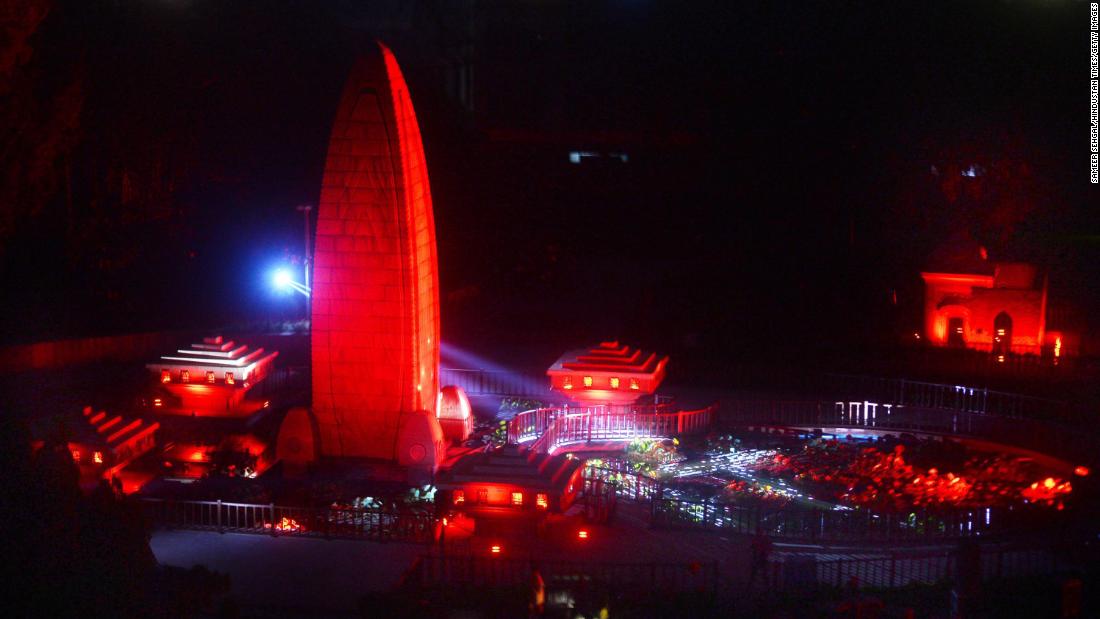(CNN) — The renovation of a historical monument in India’s Punjab state where British troops once killed hundreds of men, women and children has sparked furious debate and concerns over the “Disneyfication” of history.
On April 13, 1919, British troops fired without warning on a peaceful protest of thousands of unarmed people in Jallianwala Bagh, a public garden in the city of Amritsar.
On August 28, Prime Minister Narendra Modi inaugurated the restored memorial and posted a dramatic video on Twitter of a new sound and light show featured as part of the revamp.
In an online address, he said the renovation “will remind the new generation about the history of this holy place and inspire them to learn about its past.”
“Our history being erased”

A night view of Jallianwala Bagh Memorial during the new multimedia show.
Sameer Sehgal/Hindustan Times/Getty Images
Critics have slammed the renovation of the site, considered a somber reminder of India’s colonial past, as insensitive.
As part of the makeover, the walls of the passage — through which soldiers led by Brigadier General Reginald Dyer entered the area — have been decorated with embossed murals depicting those who were caught up in the violence.
The Martyrs’ Well, a water hole in which scores of people died after jumping in to try to save themselves, has been covered with a transparent barrier.
Meanwhile, members of Indian political opposition parties also slated the renovations.
Gandhi, who is the son of assassinated former Indian Prime Minister Rajiv Gandhi, added: “I am the son of a martyr, I will not tolerate the insult of martyrs at any cost.”
That isn’t his only famous relative. His grandmother Indira Gandhi was India’s first female leader, and his great grandfather, Jawaharlal Nehru, was the country’s founding prime minister.
A dark spot in history

The Martyr’s Well at the newly renovated Jallianwala Bagh memorial.
Sameer Sehgal/Hindustan Times/Getty Images
The Jallianwala Bagh Massacre was a key moment in India’s pre-independence movement.
The day began with Indian nationalists — who supported a free, democratic India — gathered at the site to peacefully protest British martial law.
It was also the Sikh harvest festival of Baisakhi and some at the site were celebrating. Punjab is home to India’s largest Sikh population.
Without warning, Dyer entered through the now-refurbished passage, the only entrance or exit point into Jallianwala Bagh, and ordered his troops to fire on the crowd.
They stopped firing 10 minutes later when their ammunition ran out.
The number of those killed is disputed between British and Indian authorities, with a report by a British-led committee estimating the number of victims at close to 400, with hundreds more injured.
Indian observers believe more than 1,000 people lost their lives that day.
Top image credit: Sameer Sehgal/Hindustan Times/Getty Images
